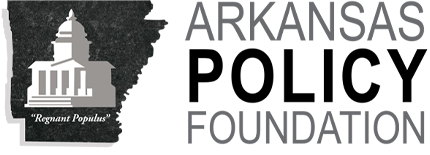“Consider an across-the-board (tax) cut, reduce the marginal rates, exempt taxpayers below a certain income level from filing, and expedite the process of indexing for inflation (Arkansas Policy Foundation, 1998)
(August 2010) The federal Full Employment and Balanced Growth Act (1978), also known as ‘Humphrey-Hawkins’ assigned a target unemployment rate of 4.0 percent for individuals age 16 and older. The Arkansas unemployment rate, at 7.4 percent (July) is nearly double that amount, and has been greater than 7.0 percent since March 2009, a 17-month period.
The lack of employment growth in Arkansas is a long-term problem. (1) Yet another characteristic of the Arkansas economy appears to be persistently high unemployment.
Two Earlier Periods of Persistently High Unemployment
The Arkansas unemployment rate was also greater than 7.0 percent in earlier periods. In fact, the Arkansas unemployment rate has exceeded 7.0 percent in 151 of 378 months since 1979. (2) Another way to comprehend the problem: persistently high unemployment has been a characteristic of Arkansas’ economy in four of 10 months since Humphrey-Hawkins’ passage.
Persistently high unemployment in two earlier periods also lasted one year or longer. The Arkansas unemployment rate topped 7.0 percent in April 1980, and did not drop below that level until August 1989, a 112-month period. Two U.S. recessions occurred early in this period (January to July 1980, July 1981 to November 1982) but most of this period of persistently high unemployment occurred during an economic expansion that lasted until July 1990. (3)
The Arkansas unemployment rate topped 7.0 percent in October 1990, and did not drop below that level until September 1992, a 23-month period that occurred around another recession (July 1990 to March 1991).
The rate did not exceed 7.0 percent again until the current period. (4)
Higher Unemployment
The first period included a 49-month period (December 1983 to December 1987) when the Arkansas unemployment rate was 8.0 percent or greater. The rate was 9.0 percent or greater for 16 months (December 1981 to December 1982, and September, October and November 1983). The rate was also 10.0 percent or greater for eight months (January to August 1983).
Conclusion
A characteristic of the Arkansas economy appears to be persistently high unemployment. Federal law assigns a target unemployment rate of 4.0 percent. Yet the Arkansas unemployment rate has dropped to that level in only two months since its passage in 1978. The Arkansas unemployment rate has exceeded 7.0 percent in 152 months during this multi-decade period. The current period of persistently high unemployment, which began in March 2009 is not unique. The rate also exceeded 7.0 percent in two earlier periods (1980-1989, 1990-1992).
–Greg Kaza
(1) The unemployment rate finally fell to Humphrey-Hawkins’ target 4.0 percent rate in 1999 and 2000, three decades after the act’s passage. The U.S. unemployment rate reached 4.0 percent in December 1999, and did not exceed that level until January 2001. The Arkansas rate briefly reached 4.0 percent in October and November 2000. The national and Arkansas unemployment rates rose above that level in the ensuing period.
(2) Policy Foundation research memo (June 2010) “Arkansas Employment at 2004 Level: Job Losses Follow 4 Years of Subpar Growth.”
(3) U.S. Bureau of Labor Statistics, “Local Area Unemployment Statistics” (http://www.bls.gov/lau/), LAU Databases, Top Picks, “Arkansas Seasonally Adjusted” Unemployment
(4) NBER (http://www.nber.org/cycles/cyclesmain.html)









